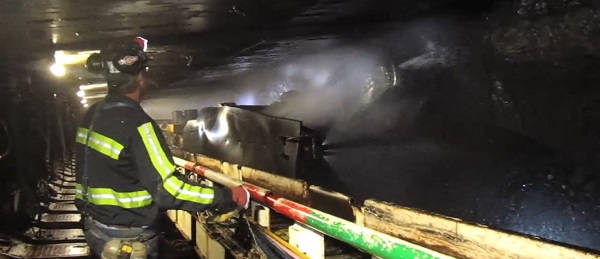Alberta
Alberta announces second waste-to-energy facility near Edmonton to join Central Alberta plant at Innisfail
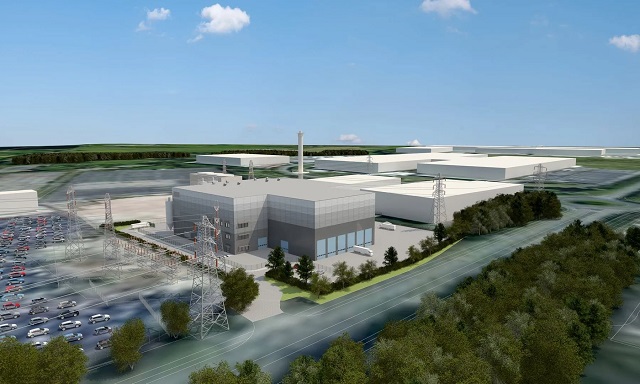
This waste-to-energy facility also built by Norway’s Varme Energy will be located in an industrial area outside of Birmingham, UK
With $2.8 million from the industry-funded TIER program, Alberta’s government is advancing Canada’s first industrial-scale waste-to-energy facility using technology.
Less than three per cent of municipal waste in Canada is currently being converted into energy, and none of these existing projects are capturing and storing their carbon dioxide emissions. With landfills accounting for 23 per cent of methane emissions in Canada, municipalities and corporations across the country are looking for innovative ways to reach their landfill diversion and sustainability targets.
Alberta’s government is providing $2.8 million through Emissions Reduction Alberta for a $6.1-million front-end engineering and design study led by Varme Energy. This funding helps get Canada’s first facility that uses carbon capture to turn municipal waste into clean electricity closer to construction.
“Alberta is a global leader in carbon capture, utilization and storage technology, and the best place for innovative projects like this one to thrive. Varme Energy is tapping into our province’s exceptional geology, workforce and expertise to advance a landfill elimination solution that will reduce emissions and continue Alberta’s reputation for delivering clean, secure energy to the world.”
“Alberta is a leader in responsible energy development. I am proud to see our government continue to invest in new, innovative technologies that will help ensure our power grid is affordable, reliable and sustainable for generations to come.”
The future facility will be built on Gibson Energy land within the Designated Industrial Zone in Alberta’s Industrial Heartland, with operations estimated to begin in 2027. Here, solid waste from municipal landfills will be converted into electricity for the grid, with the captured carbon injected into one of Alberta’s carbon sequestration hubs. The facility is expected to capture and store about 185,000 tonnes of carbon dioxide annually.
“Emissions Reduction Alberta is proud to provide provincial funding to this first-in-Canada project. The study is an important first step to realizing a large-scale municipal waste-to-energy facility with carbon capture and storage. This project not only reduces emissions, but also sets a new standard for how we provide clean, reliable energy from waste destined for landfills.”
By incorporating carbon capture into the waste-to-energy process, all of the greenhouse gas emissions that are typically released from a waste-to-energy facility will instead be captured and sequestered underground. This helps reduce methane emissions from waste that would normally decompose at the landfill, and ensures all carbon is captured and stored deep in the earth, creating a carbon-negative system where the process stores more carbon dioxide than it emits.
“We are thrilled at how Varme has been embraced by Alberta. The magnitude of support, encouragement and collaboration we’ve received from the Government of Alberta, and Albertans at large, has been beyond our expectations. This direct provincial financial support is a significant de-risk that will help bring our project to a positive final investment decision. Emissions Reduction Alberta’s support demonstrates how Alberta’s TIER carbon pricing system is a powerful tool for converting our historical emissions levies into future emissions reductions, modern jobs and economic activity.”
Quick facts
- Varme Energy’s front-end engineering and design study is expected to be completed in December 2024 with construction set to begin in 2025.
- In addition to provincial funding support through the Technology Innovation and Emissions Reduction (TIER) program, Varme Energy is working with Gibson Energy, the City of Edmonton and the Canada Growth Fund to advance this project, with the ultimate goal of diverting more than 200,000 tonnes of municipal solid waste away from landfills each year.
- Canada currently processes about 26 million tonnes of municipal solid waste annually.
- Through the Alberta Carbon Trunk Line and Quest carbon capture, utilization and storage projects, Alberta has safely sequestered more than 13.5 million tonnes of carbon dioxide to date, which is equivalent to the emissions from 2.9 million cars per year.
- McKinsey projects that annual global investment in carbon capture, utilization and storage could reach $175 billion by 2035, with the majority of these investments in hard-to-abate sectors and the power sector.
Alberta
CPP another example of Albertans’ outsized contribution to Canada
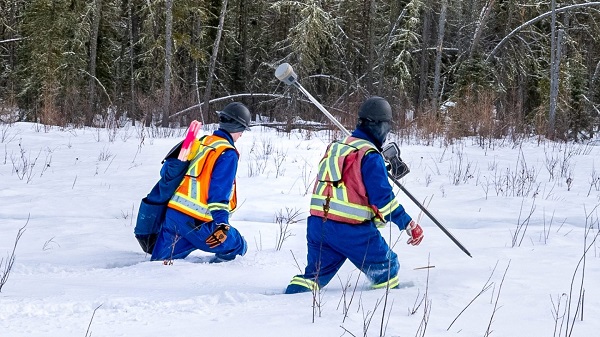
From the Fraser Institute
By Tegan Hill
Amid the economic uncertainty fuelled by Trump’s trade war, its perhaps more important than ever to understand Alberta’s crucial role in the federation and its outsized contribution to programs such as the Canada Pension Plan (CPP).
From 1981 to 2022, Albertan’s net contribution to the CPP—meaning the amount Albertans paid into the program over and above what retirees in Alberta received in CPP payments—was $53.6 billion. In 2022 (the latest year of available data), Albertans’ net contribution to the CPP was $3.0 billion.
During that same period (1981 to 2022), British Columbia was the only other province where residents paid more into the CPP than retirees received in benefits—and Alberta’s contribution was six times greater than B.C.’s contribution. Put differently, residents in seven out of the nine provinces that participate in the CPP (Quebec has its own plan) receive more back in benefits than they contribute to the program.
Albertans pay an outsized contribution to federal and national programs, including the CPP because of the province’s relatively high rates of employment, higher average incomes and younger population (i.e. more workers pay into the CPP and less retirees take from it).
Put simply, Albertan workers have been helping fund the retirement of Canadians from coast to coast for decades, and without Alberta, the CPP would look much different.
How different?
If Alberta withdrew from the CPP and established its own standalone provincial pension plan, Alberta workers would receive the same retirement benefits but at a lower cost (i.e. lower CPP contribution rate deducted from our paycheques) than other Canadians, while the contribution rate—essentially the CPP tax rate—to fund the program would likely need to increase for the rest of the country to maintain the same benefits.
And given current demographic projections, immigration patterns and Alberta’s long history of leading the provinces in economic growth, Albertan workers will likely continue to pay more into the CPP than Albertan retirees get back from it.
Therefore, considering Alberta’s crucial role in national programs, the next federal government—whoever that may be—should undo and prevent policies that negatively impact the province and Albertans ability to contribute to Canada. Think of Bill C-69 (which imposes complex, uncertain and onerous review requirements on major energy projects), Bill C-48 (which bans large oil tankers off B.C.’s northern coast and limits access to Asian markets), an arbitrary cap on oil and gas emissions, numerous other “net-zero” targets, and so on.
Canada faces serious economic challenges, including a trade war with the United States. In times like this, it’s important to remember Alberta’s crucial role in the federation and the outsized contributions of Alberta workers to the wellbeing of Canadians across the country.
Alberta
Made in Alberta! Province makes it easier to support local products with Buy Local program

Show your Alberta side. Buy Local. |
When the going gets tough, Albertans stick together. That’s why Alberta’s government is launching a new campaign to benefit hard-working Albertans.
Global uncertainty is threatening the livelihoods of hard-working Alberta farmers, ranchers, processors and their families. The ‘Buy Local’ campaign, recently launched by Alberta’s government, encourages consumers to eat, drink and buy local to show our unified support for the province’s agriculture and food industry.
The government’s ‘Buy Local’ campaign encourages consumers to buy products from Alberta’s hard-working farmers, ranchers and food processors that produce safe, nutritious food for Albertans, Canadians and the world.
“It’s time to let these hard-working Albertans know we have their back. Now, more than ever, we need to shop local and buy made-in-Alberta products. The next time you are grocery shopping or go out for dinner or a drink with your friends or family, support local to demonstrate your Alberta pride. We are pleased tariffs don’t impact the ag industry right now and will keep advocating for our ag industry.”
Alberta’s government supports consumer choice. We are providing tools to help folks easily identify Alberta- and Canadian-made foods and products. Choosing local products keeps Albertans’ hard-earned dollars in our province. Whether it is farm-fresh vegetables, potatoes, honey, craft beer, frozen food or our world-renowned beef, Alberta has an abundance of fresh foods produced right on our doorstep.
Quick facts
- This summer, Albertans can support local at more than 150 farmers’ markets across the province and meet the folks who make, bake and grow our food.
- In March 2023, the Alberta government launched the ‘Made in Alberta’ voluntary food and beverage labelling program to support local agriculture and food sectors.
- Through direct connections with processors, the program has created the momentum to continue expanding consumer awareness about the ‘Made in Alberta’ label to help shoppers quickly identify foods and beverages produced in our province.
- Made in Alberta product catalogue website
Related information
-

 2025 Federal Election2 days ago
2025 Federal Election2 days agoCarney’s Fiscal Fantasy: When the Economist Becomes More Dangerous Than the Drama Teacher
-

 International11 hours ago
International11 hours agoPope Francis has died aged 88
-

 2025 Federal Election1 day ago
2025 Federal Election1 day agoA Perfect Storm of Corruption, Foreign Interference, and National Security Failures
-
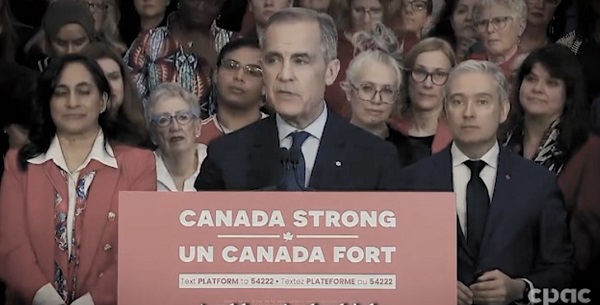
 2025 Federal Election1 day ago
2025 Federal Election1 day agoCampaign 2025 : The Liberal Costed Platform – Taxpayer Funded Fiction
-

 Business11 hours ago
Business11 hours agoCanada Urgently Needs A Watchdog For Government Waste
-
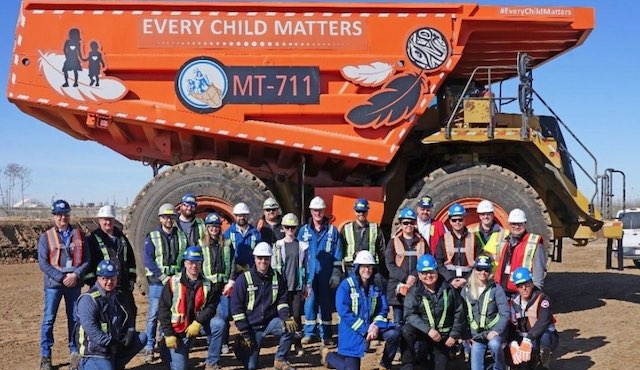
 Energy11 hours ago
Energy11 hours agoIndigenous-led Projects Hold Key To Canada’s Energy Future
-
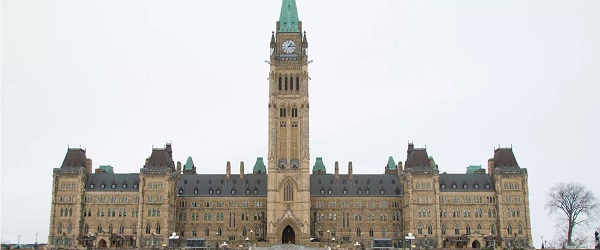
 2025 Federal Election10 hours ago
2025 Federal Election10 hours agoCarney’s budget means more debt than Trudeau’s
-

 International7 hours ago
International7 hours agoPope Francis Dies on Day after Easter





